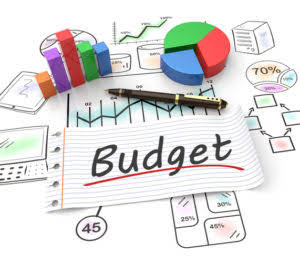
Once the actual data is collected, it is essential to determine the flexible budget based on the actual level of activity. This involves adjusting the budgeted costs and revenues to reflect the actual activity levels. Compile your findings into a comprehensive report that includes an overview of recording transactions actual performance, budgeted figures adjusted for actual activity levels, variances, and an analysis of those variances. In Exhibit 7 we compare the actual results withthe planned operating budget. The comparison of actual results with the planned operating budget does not provide a basis for evaluating whether or not management performed efficiently at the actual level of operations.
Perform variance analysis

Shipping is a variable cost since it is always $4 per unit but the total depends on how many units are sold. The cost formula for shipping would be $4 per unit sold, which is noted as $4Q (Q equals the quantity sold). With the inclusion of different levels of activity, managers can accurately assess performance and make informed decisions based on actual operational levels. This adaptable approach enhances the effectiveness of budgeting practices by aligning financial targets with the dynamic nature of business operations. This ensures that the budget remains a relevant and valuable tool for management decision-making. Variance analysis is a critical tool for organizations to assess the differences between actual and planned outcomes.
Manufacturing Company
- While planning budget quantities are usually close to actual results, it is nearly impossible to predict the actual sales quantity and costs before the period begins.
- Revenue and spending variances are used to evaluate how well the organization did at achieving revenue, cost, and profit targets.
- When department heads and managers are evaluated based on performance against a flexible budget, it creates a fairer and more realistic basis for accountability.
- Of course it also comes with the fact that we have to write a report about it.
By closely examining the revenue variances, companies can pinpoint specific services that may be underperforming and need further attention to boost profitability. This level of detailed analysis empowers service companies to make informed decisions and adjustments to their operations, ultimately enhancing overall financial performance. To performance budget prepare a flexible budget report, start by identifying variable costs per unit of activity and fixed costs.
Analyzing revenue and spending variances LO7

In order to get an idea of what and how you can make the budget performance, you must gather data, may it be monthly or quarterly. By analyzing the actual sales, the company gains insights into its revenue streams, identifying areas of strength and potential opportunities for improvement. For a service company, the Flexible Budget Performance Report may involve the evaluation of actual sales and quantity variance, shedding light on the revenue generation and service delivery efficiency. Quantity variance refers to the difference between the actual quantity of inputs used and the budgeted quantity, shedding light on any inefficiencies or unexpected changes in production levels. The initial step in preparing a Flexible Budget Performance Report is to gather actual data.
Allows for Better Budget Planning
Secondly, remember that building an accurate flexible budget takes insights from across the organization. So, engage early and often with department heads and operational managers. Pick their brains on cost drivers, Bookkeeping for Painters areas prone to variance, and any other intel that can refine your assumptions.
- The $1900 actual supplies used is$100 more than the flexible budget amount of $1,800.
- It also compares those adjusted, flexed budget figures to your actual real-world results, analyzing the differences line by line.
- The cost formula for shipping would be $4 per unit sold, which is noted as $4Q (Q equals the quantity sold).
- We’re preparing this performance report on a summary basis for an entire year, but a company might prepare this kind of report using more detail and presenting it on a monthly basis.
- Communicating with clarity is key for this report to drive better decisions.
- Second, given the actuallevel of operations, management can compare actual costs at actualvolume with budgeted costs at actual volume.
- A cost formula is used to predict the expected cost for a specific expenditure.
- The variances represent the differences between the flexible budget and the actual results.
- Costs and revenues are classified into one of three categories of cost behavior—variable, fixed, or mixed.
- This report varies from a traditional budget versus actual report, in that the actual sales figure is plugged into the budget model, which then uses formulas to alter the budgeted expense amounts.
No more flying blind – you’ll get better and better at predicting financial performance. With this variance analysis, the flexible budget report gives you powerful insights. It pinpoints areas where you were more efficient or less efficient than expected, so you can investigate the root causes. A budget performance report is a document that records the actual budget performance.
- Before a planning budget can be prepared, the revenue formulas and cost formulas necessary to complete the particular budget need to be compiled.
- The $1900 actual supplies used is $100 more than the flexible budget amount of $1,800.
- However, she sold more units than planned, so her projected revenue is $7,500 higher.
- In this case, Amara would need to investigate the delays and take corrective action if possible.
- Flexible operating budget and budget variances illustrated As stated earlier, a flexible operating budget provides detailed information about budgeted expenses at various levels of activity.

The flexible budget performance report would show the actual cost per unit at $9.58, compared to the budgeted cost per unit of $10. This would result in a favorable variance of $0.42 per unit, or $5,040 in total. Budgeting is a crucial aspect of financial management in the retail industry. One tool that aids in this process is budget variance analysis, which compares the budgeted and actual performance of a company. This comparison allows management to identify areas where the company has over or underperformed in terms of expenses, providing valuable insights for future budget adjustments. This, in turn, leads to improved financial control and forecasting accuracy within the retail environment.
